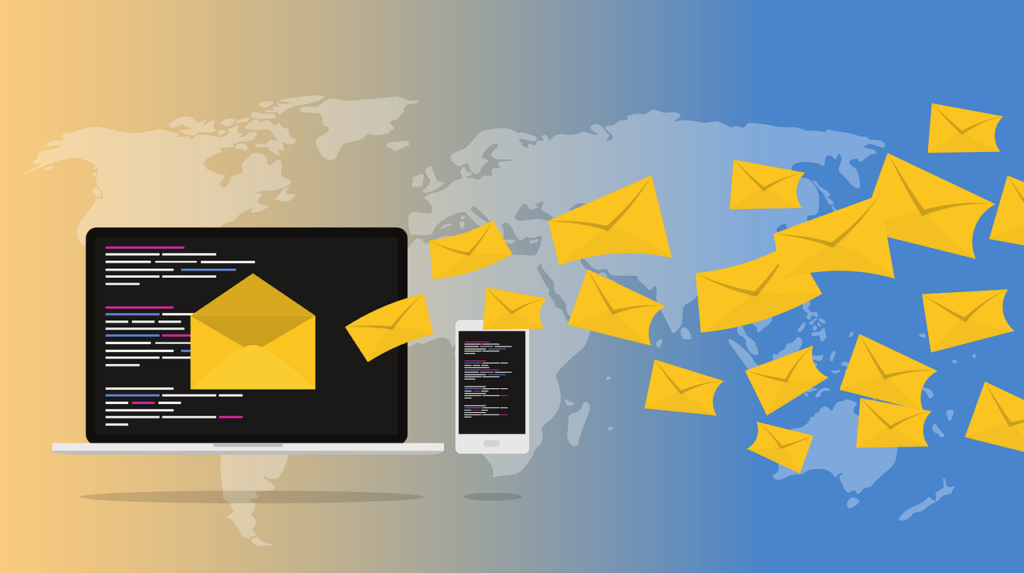In this comprehensive resource, we will explore the power of email marketing segmentation strategies and how it can significantly enhance your marketing efforts. Whether you’re a seasoned marketer or just starting out, understanding the art of segmentation is crucial for reaching the right audience with the right message at the right time. Get ready to dive deep into the world of email marketing segmentation and unlock the potential for improved engagement, conversion, and customer satisfaction.
Segmentation Basics
Segmentation is an essential part of email marketing strategy. By dividing your email list into smaller, more targeted segments based on specific criteria like demographics, behavior, or preferences, you can send highly personalized and relevant content, ultimately increasing engagement and conversion rates. Analyzing customer data and behavior allows you to tailor segments to the unique needs and interests of each group, leading to more effective communication and stronger relationships. Additionally, segmentation enables A/B testing and optimization of email marketing strategies by targeting different segments with varying content or offers. This can lead to valuable insights and improvements in your overall email marketing performance.
Understanding Your Audience
Understanding your audience is the cornerstone of successful email marketing segmentation. It enables you to uncover common traits, behaviors, and preferences among your subscribers, which in turn allows you to create highly targeted segments for your email campaigns. You can gather valuable insights about your audience by conducting surveys, analyzing purchase history, and monitoring website activity. Utilizing tools such as Google Analytics can provide in-depth demographic and psychographic data, facilitating the creation of more accurate and targeted segments. Furthermore, personalizing content based on this understanding can result in higher open rates, click-through rates, and ultimately, improved ROI for your email marketing efforts. The more you understand your audience, the more effective your segmentation strategies will be.
Demographic Segmentation
Demographic segmentation plays a crucial role in email marketing strategy by categorizing subscribers based on quantifiable characteristics such as age, gender, income level, education, occupation, and location. This foundational framework enables the creation of targeted content that resonates with specific demographic groups within your email list, resulting in more personalized and relevant messaging. By leveraging demographic segmentation, you can craft tailored messages that speak directly to the unique needs and preferences of different age groups or geographic regions. Moreover, demographic data allows for the adaptation of the timing and frequency of your emails based on the daily routines or time zones of various segments within your subscriber base.
Behavioral Segmentation
Behavioral segmentation is a powerful strategy that involves categorizing subscribers based on their actions and interactions with your emails. By analyzing purchase history, you can customize specific promotions or product recommendations to different customer segments, resulting in highly targeted and relevant content. Understanding the engagement level of your subscribers is crucial as it enables the creation of content that resonates with their interests, ultimately leading to higher email open rates and click-through rates. Segmenting based on behavioral patterns allows you to deliver more personalized and engaging experiences to your subscribers, fostering stronger connections and driving better results for your email marketing campaigns.
Purchase History
Analyzing past purchases is a powerful method for personalizing product recommendations in email campaigns. By segmenting your audience based on purchase history, you can create exclusive offers tailored to loyal customers, fostering a sense of appreciation and exclusivity. Moreover, this strategy can be instrumental in re-engaging inactive customers by showcasing products related to their previous purchases, reigniting their interest and driving conversions. Additionally, identifying high-value customers through purchase history provides crucial insight for developing tailored loyalty programs, ultimately strengthening customer retention and lifetime value.
Engagement Level
Segmenting based on the engagement level of your subscribers is instrumental in sending targeted re-engagement emails to inactive subscribers, giving you the opportunity to reignite their interest and drive conversions. This approach allows you to prioritize content based on subscriber interaction, which can significantly improve the overall performance of your email campaigns. Understanding the engagement level of your audience also empowers you to create dynamic content that encourages interaction and feedback, ultimately leading to improved customer satisfaction. By segmenting based on engagement, you can deliver relevant content that resonates with your subscribers, fostering stronger connections and driving better results for your email marketing efforts.
Psychographic Segmentation
Psychographic segmentation offers a powerful approach to understanding your audience on a deeper level by grouping customers based on their lifestyle preferences, hobbies, activities, and spending habits. This insightful strategy enables you to tailor your email marketing campaigns to resonate with the core values and interests of your subscribers, allowing for a more personalized and engaging experience. By segmenting based on psychographics, you can create content that speaks directly to the unique lifestyles of different customer groups, fostering stronger connections and ultimately driving better results for your email marketing efforts. This targeted approach allows for the precise targeting of specific customer segments based on their interests, attitudes, and personality traits, resulting in highly relevant and impactful messaging.
Lifestyle Preferences
Segmenting by lifestyle preferences involves categorizing customers according to their leisure activities, social behaviors, and overall way of life. This approach helps in crafting email content that aligns with the recreational pursuits and everyday choices of distinct customer segments. Understanding lifestyle preferences enables the creation of targeted email campaigns that appeal to customers’ individualistic tastes and pastimes. By considering lifestyle preferences, marketers can personalize emails to cater to varying customer lifestyles and recreational inclinations. This targeted approach allows for the precise targeting of specific customer segments based on their interests, attitudes, and personality traits, resulting in highly relevant and impactful messaging.
Values and Interests
Segmenting by values and interests allows you to dive into your customers’ core beliefs, ethical principles, and areas of personal passion or concern. By customizing your email messaging to reflect these deeply held values, you can foster a deeper connection and demonstrate a genuine understanding of what matters most to your audience. Understanding the values and interests of your subscribers is instrumental in creating email content that truly resonates with their individual convictions and areas of enthusiasm. This targeted approach empowers you to tailor your emails to reflect the unique values and interests of different customer segments, ultimately leading to more impactful and meaningful communication with your audience.
Segmentation Tools and Platforms
One of the key strategies for effective email marketing is to utilize customer segmentation tools to divide your audience based on demographics, behavior, or preferences. By choosing a platform that offers advanced segmentation features, such as dynamic content and automated triggers, you can implement segmentation tools to personalize your marketing efforts and improve customer engagement. Additionally, integrating your segmentation tools with your existing CRM system allows for a seamless data flow and analysis, enabling you to gain valuable insights and optimize your email marketing campaigns for maximum impact.
CRM Systems
When it comes to implementing email marketing segmentation strategies, selecting a CRM system with robust capabilities is crucial. Utilize the CRM’s tagging feature to categorize customers and tailor your email campaigns effectively. Automation within the CRM system can streamline the segmentation process, ensuring timely and targeted communications. Additionally, regular analysis of segmented data in the CRM system is essential for refining and optimizing your email marketing strategies for maximum impact.
Email Marketing Software
When it comes to email marketing software, opt for a platform that offers intuitive segmentation tools to precisely target your audience. Make the most of custom fields within the software to segment subscribers based on their interactions with previous campaigns, ensuring tailored and relevant content. Implement A/B testing to optimize segmented email content and delivery times, maximizing the impact of your campaigns. Additionally, integrating your chosen email marketing software with other platforms enables comprehensive and data-driven segmentation, allowing for a deeper understanding of your audience’s preferences and behaviors.
Best Practices for Effective Segmentation
Understanding your audience and their specific needs is paramount when creating segments for targeted email campaigns. By utilizing data analytics to gather insights on customer behavior and preferences, you can develop more effective segmentation strategies that resonate with your audience. Implementing dynamic content in emails allows for personalized messaging based on segmentation criteria, ultimately enhancing engagement and conversion rates. It’s also essential to regularly review and update segmentation criteria based on campaign performance and customer feedback to ensure ongoing relevance and effectiveness.
Personalization Techniques
Email marketing segmentation strategies can be further enhanced by leveraging personalized subject lines that directly speak to the recipient’s interests or past interactions with your brand. This personalized approach has been proven to significantly increase open rates and overall engagement. Additionally, behavioral targeting can be utilized to tailor email content based on the recipient’s past actions, such as website visits or previous purchases. This not only enhances the relevance of the content but also drives conversions by delivering more personalized messaging. Implementing A/B testing for different personalization elements, such as product recommendations, images, or calls-to-action, is another valuable strategy to identify the most effective approaches for each segmented audience. Furthermore, incorporating user-generated content or testimonials in emails adds a personal touch that can foster stronger connections with segmented audiences, ultimately leading to more impactful and meaningful communication.
Testing and Optimization
One effective approach to refining your email marketing segmentation strategies is to conduct thorough A/B testing of different segmentation approaches, spanning demographics, behavior-based segments, and purchase history segments. This allows you to identify the most impactful strategies and tailor your campaigns accordingly. Regularly analyzing key performance metrics, such as open rates, click-through rates, and conversion rates, provides valuable insights into the effectiveness of various segmentation techniques, guiding you in optimizing your email marketing efforts. Additionally, optimizing email send times based on segmented audience preferences and behaviors can maximize engagement and response rates. Utilizing multivariate testing to experiment with various combinations of personalization techniques within different segments ensures continuous optimization for enhanced results.
Conclusion
In conclusion, effective email marketing segmentation strategies are essential for engaging your audience and driving impactful results. By understanding your audience through demographic, behavioral, and psychographic segmentation, you can tailor your campaigns to resonate with their specific preferences and interests. Leveraging the right segmentation tools and platforms, such as CRM systems and email marketing software, empowers you to streamline the segmentation process and deliver targeted communications. Additionally, implementing best practices like personalization techniques and thorough testing and optimization allows you to continuously refine your segmentation strategies for maximum impact. With these strategies in place, you can create more meaningful and effective email marketing campaigns that connect with your audience on a deeper level and drive better outcomes for your business.


